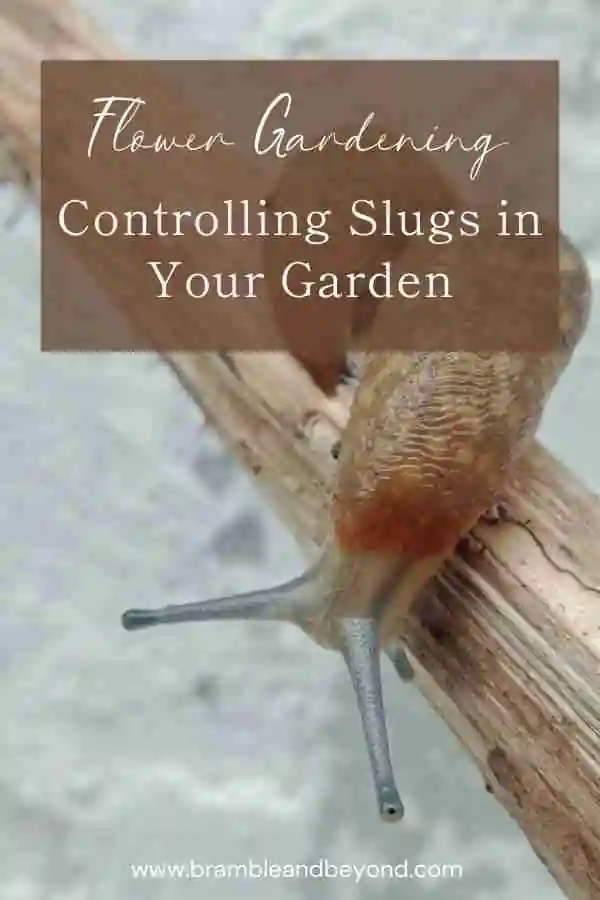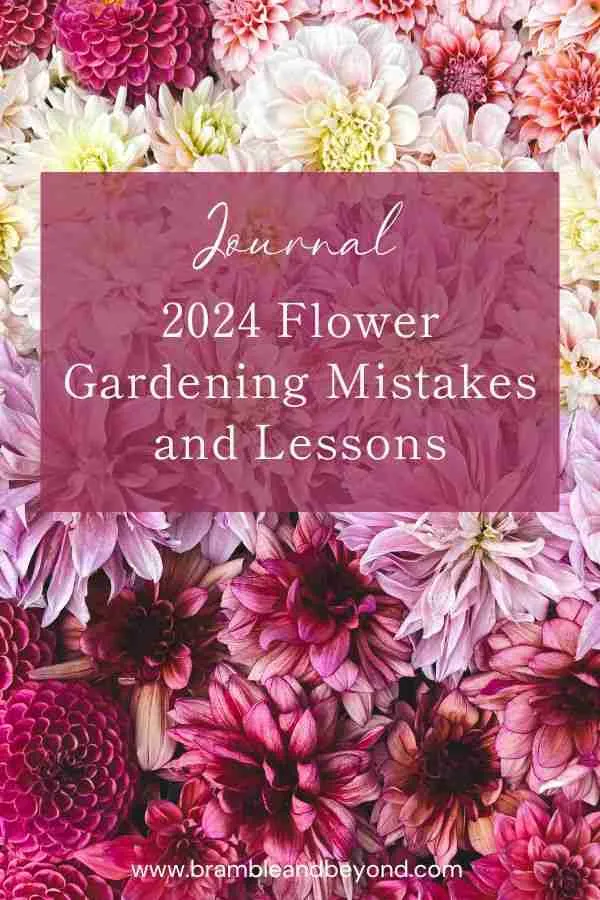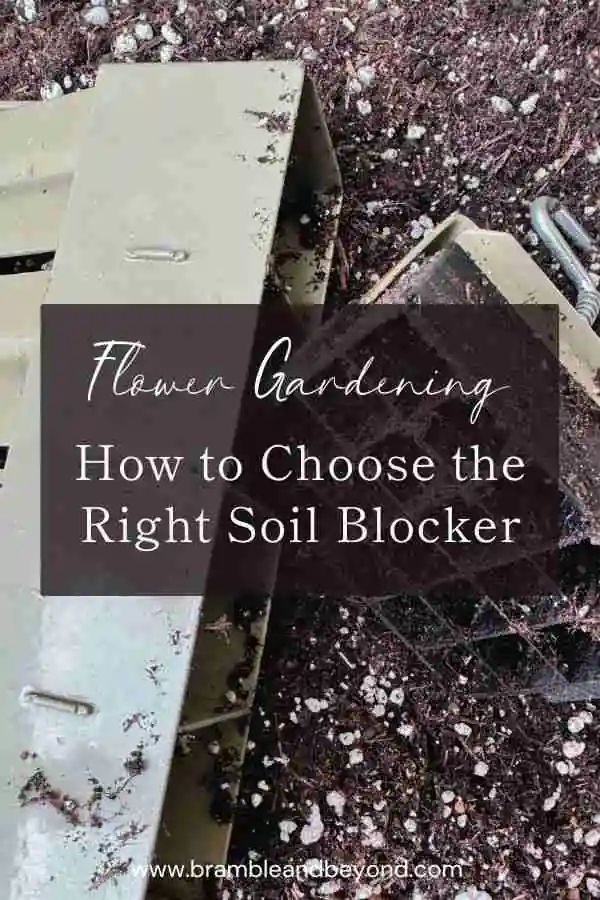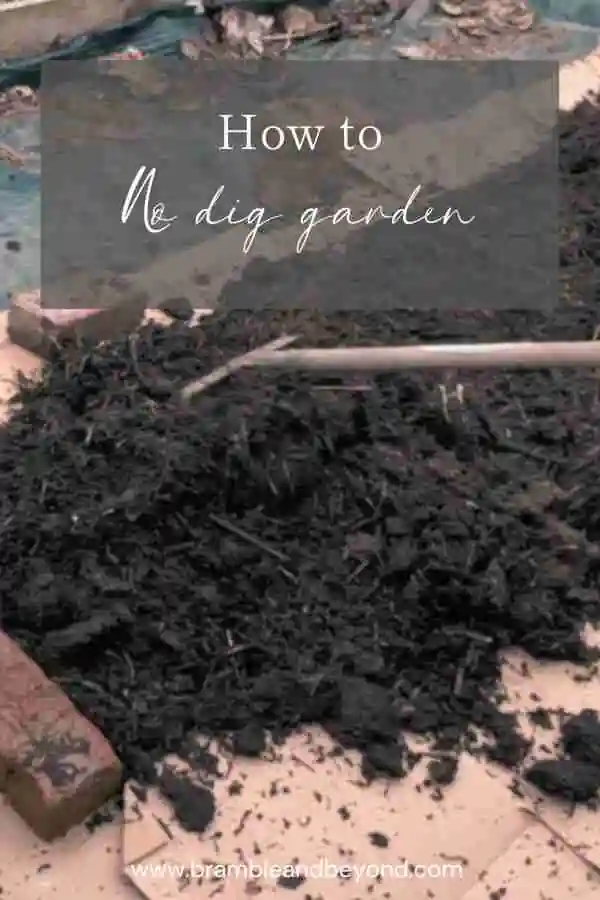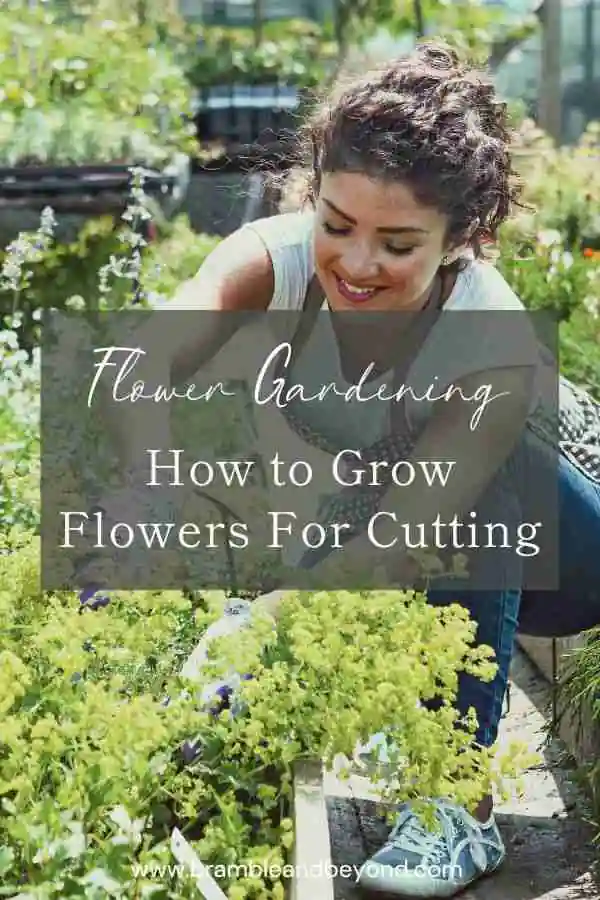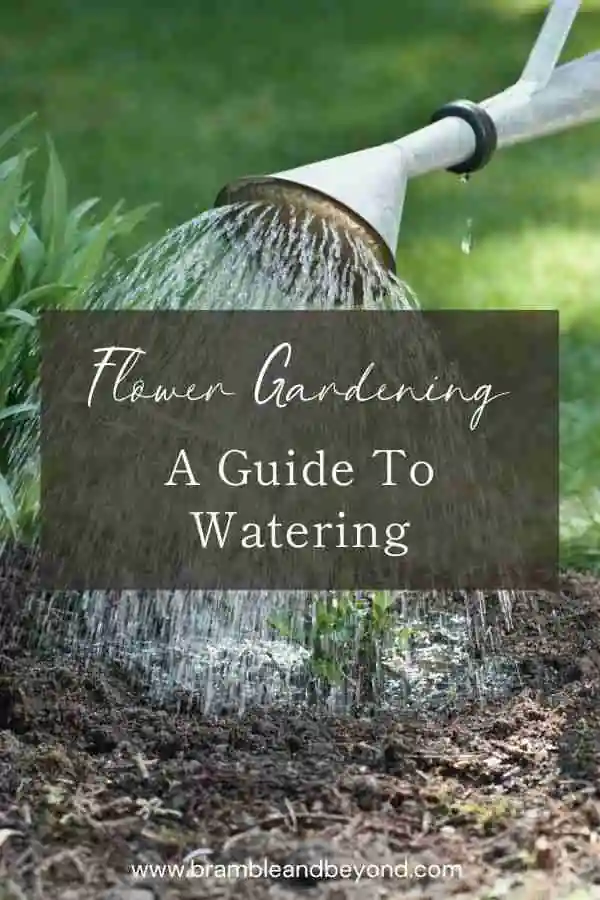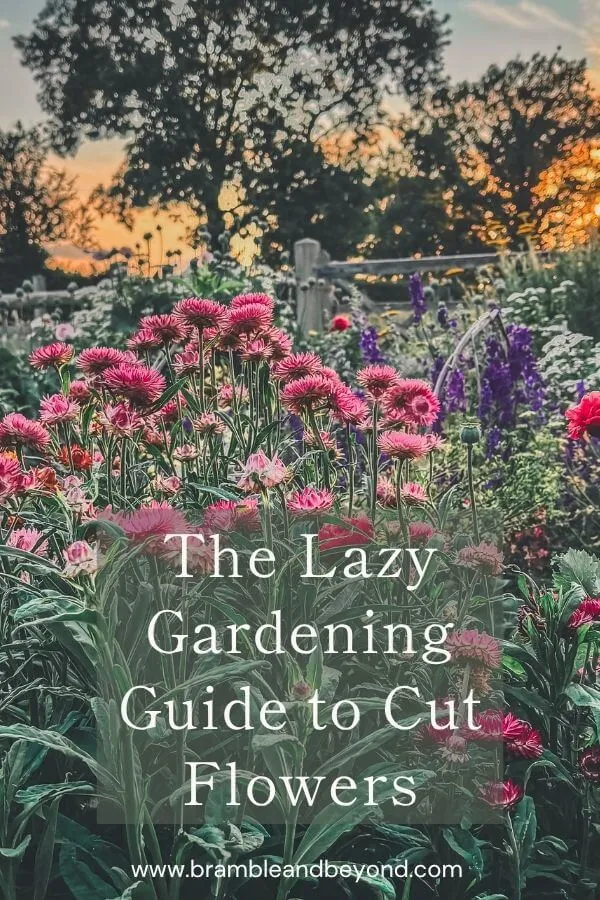Disclosure: This post may contain affiliate links, meaning I get commission if you decide to make a purchase through my links, at no cost to you. Please read my Affiliate Disclosure for more information.
Have you noticed a slimy, unwelcome guest slithering through your carefully cultivated flower beds? Yes, I’m talking about slugs and snails. 2024 has been the year of the slug, or at least it has been in this neck of the woods. But fear not, there are ways to control slugs in your garden without resorting to harsh chemicals. In this post, I’ll guide you through some eco-friendly strategies to wage war on these beasties and keep your garden slug-free.
What is the problem with slugs and snails
An average garden contains approximately 200 slugs (although this year it feels like so many more!), and in a season each slug can munch through up to 0.8 kg (1 3/4 lb) of plants. It’s understandable to feel a bit miffed at slugs.
The slug is a hermaphrodite, which means it has both male and female reproductive systems, so it can mate whenever and with whomever. As a result, each slug can produce up to 36 eggs, several times a year. The white-jelly eggs are laid underground and hatch within 10-21 days, reaching adulthood within 6 weeks. Considering that a slug’s lifespan can be several years, and each year it grows bigger with an increasing ability to nibble away at more of your garden, it’s no wonder they can be quite the garden guests.
This year, 2024, has been something of a disaster in my garden. I have lost track of the number of seedlings and plants I have lost to slugs and snails. Whole crops of larkspur, china asters, celosias, ammi majus, orlaya, daucus to name just a few, wiped out over night. I even grew multiple crops of a lot of these to try and recover my losses, but all I did was provide more food for the slugs. This is before I even talk about my lupins and dahlias.
It’s safe to say that at this point in the year, my flower garden is a disaster with hardly anything ready to be harvested. When I compare it back to this time last year where I had a massive choice. This means that my first foray into event floristry, this coming weekend, is proving more stressful than I had hoped.

Although it may seem that slugs and snails, much like wasps, serve no purpose at all. They are part of the food chain, so to kill them, especially with chemicals, can harm your garden’s eco-system.
Why do slugs like my garden?
Understanding the enemy is the first step to victory.
I wish I had noticed in advance the potential trouble to come, when not a single hardy annual survived the winter, and it was a mild one at that! The biennials did a bit better, but not by much. I really should have paid attention to these warning signs, and I maybe could’ve prevented total wipe out of some of my plants.
Slugs love damp, cool environments, and from summer 2023 through to spring 2024, it has been one of the wettest periods I’ve experienced. With a mild winter, my garden became the perfect breeding ground for them.
On top of that, my heavy clay soil and extensive use of weed membrane to control weeds, created ideal conditions for slugs to multiply. And multiply they did. I could not believe how many were sheltering under the weed membrane when I lifted it one morning. It’s safe to say this was removed pretty quickly.
Slugs and snails particularly enjoy young, tender plants. So, an annual cut flower garden or a veggie patch is like a five-star restaurant for them.
Additionally, these slimy pests are nocturnal and do most of their munching in the dark, so unless you’re vigilant, they do their worst while you sleep. Lately, a regular nighttime slug patrol has become my new evening activity.
Usually, a good, long, cold snap over winter can naturally reduce the number of slug and snail eggs. This leaves you with a more manageable number to deal with come spring and summer. This means that with the help of a few predators, the damage they do is minimal with little intervention.

How to prevent slugs in your garden?
Prevention is better than cure, as the old saying goes.
To keep slugs at bay, try incorporating some plants in your garden that slugs don’t find appetising, like roses, geraniums, or lavender. Filling your garden with plants that slugs are not interested in means that your garden and the slugs can live in harmony together. Don’t fear that this will leave you with a dull garden, there are plenty of plants that can be used as cut flowers that slugs avoid. This post covers in more detail a list of plants slugs hate.
Another preventative measure is to avoid over-watering your garden, as slugs are attracted to moist environments. Watering in the morning means that your plants get the maximum benefit of the water while the slugs are sleeping. Hopefully be the time they come out to feast the water will be fully soaked in or evaporated, making the environment less attractive.
As much as we think slugs and snails are unattractive, there are some natural predators who love them. Frogs, toads, hedgehogs, birds and some insects, all love a meal of slugs and snails. If you do all you can to create attractive habitats for these creatures, they will repay you by reducing the numbers of all your pests (not just slugs and snails). So create that pond for the amphibians, plant lots of colourful flowers for the birds and insects, or make stacks of logs and leaves for hedgehog homes, your garden will thank you for it.

Nature-friendly slug control methods
If you simply adore hostas, larkspur, dahlias, or zinnias (just a few of a slug’s favourite snacks), you might have to accept a bit of slug damage. But don’t worry, you can still minimise it!
Even after taking the preventative steps we talked about earlier, if you notice your plants are still getting munched on, there are some fun and creative methods you can try to keep those slugs at bay.
Here are a few techniques you can try to save your plants and control slugs in your garden using eco-friendly methods.
- Nightly patrols: This method involves manually removing slugs from your garden, ideally in the early morning or late evening when they are most active. You then, of course, have the problem of what to do with those captured. If you can dispose of them far enough away from your garden so that they won’t return then you are in luck. This approach certainly gives you a sense of satisfaction but you can only remove those that are visible when you go out, there may be more lurking, ready come out after you have gone!
- Mulching: Slugs don’t like to slither over anything prickly or rough so if you scatter some bramble stems, a thistle mulch or wood chips around your plants it can make it difficult for slugs to move across the soil to get to your plants. Make sure you create a complete barrier around your plants, as any gaps will be found easily by our slimy friends.
- Beer Traps: Bury a shallow container filled with beer in your garden beds. Slugs are attracted to the yeast in beer and will fall into the container and drown. Whilst you are killing another creature, I kind of fell they die happy! I found that beer or ale was more effective than larger. This of course, gets expensive if you need to top them up every day.
- Strulch: This unique garden mulch made from straw deters slugs while helping retain moisture in your soil. This is easy to apply and is long lasting. Whilst this is a man-made product I have found it to produce fantastic results.
- Wool Pellets: When wet, these swell up and create a rough barrier that slugs won’t cross. I have to admit that this was my first line of defence this year and whilst it maybe had an initial effect, it was not long lasting. I’m not sure whether I was supposed keep this wet to be effective, but that seems quite labour intensive and counterintuitive, as I would also be creating an environment that slugs love.
- Copper: Slugs don’t like to touch copper. Try wrapping copper tape around plant pots or raised beds. I feel that this is only effective in small spaces, like a pot, as you cannot apply it to a whole bed. As such I haven’t found much use of this.
- Vaseline: Again, if you have pots you can try applying vaseline to the top of the pots to prevent the slugs from crossing. I’ve not tried this so can’t say how effective it is.
- Physical barrier: Cut out the bottom of a large plastic pot, or use organza mesh bags, and surround your precious plant to create a barrier to the leaves. I did this for my dahlias that were left like skeletons after a night time feast, and they did recover after several weeks and weren’t attacked further.
- Sacrificial planting: Planting slug-attractive plants away from your main garden can lure slugs away from your prized plants. Alternatively, plant them within your garden borders and hope they are more tasty than your precious plants. If you are planting en-masse, then planting more than you need gives you a buffer to sacrifice some of your plants in the hope that they won’t all get eaten. This is a slightly risky strategy, as every single on of my larkspur plants were eaten this year even though I had more than I thought I needed.
- Diatomaceous earth: Diatomaceous earth is a powder containing about 80%-90% silica. Essentially it is a type of sand made from of the remains of fossilised algae. It is thought to kill pests by dehydrating them. Sprinkling this natural powder around plants can create a barrier that slugs are reluctant to cross. This is similar to using salt. The slugs and snails are killed slowly using this, so I can’t really bring myself to use this.
- Eggshells: Crushed eggshells can act as a physical barrier to slugs and also improve soil quality as they decompose.
- Nematodes: These microscopic worms can be introduced to your garden soil to infect and kill slugs. This is a very effective control and will usually last for several months and is a good technique to get the slug numbers under control if you are overrun. However, again, the slugs are killed slowly using this method, so I’m reluctant to use this.
- Companion planting: Slugs generally don’t like heavily scented, or hairy leaved plants, therefore, certain plants, like rosemary and thyme, can repel slugs when planted near vulnerable crops. If you have the space and can create a plant barrier then this may be a useful approach to take.
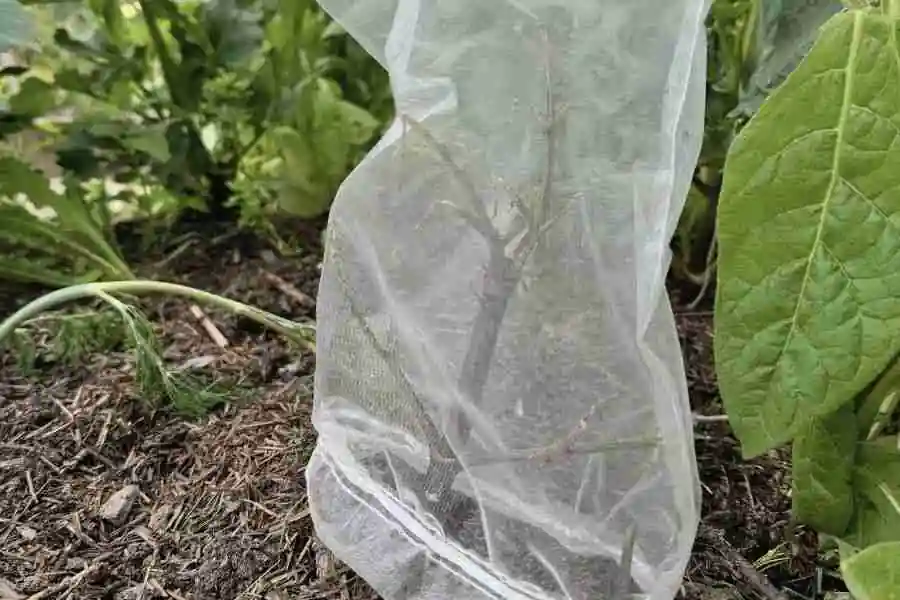
These are just some of the slug controls I know about, and I have tried most. But there are many more that you could try that all follow the same theme of creating a hostile environment for the slug to cross to get to your plants.
Less eco-friendly slug control methods
While I don’t recommend them, there are less eco-friendly options out there. These include slug pellets and salt. However, these methods can harm other wildlife and beneficial insects in your garden, so please use them as a last resort.
What to do with a slug (dead or alive)
So you’ve managed to deal with the slugs in your garden, but now you’re wondering what to do with them, right?
Believe it or not, slugs can be quite useful! They’re packed with protein and can be a tasty treat for your cats, ducks, chickens, or fish. It might sound a little icky, but it’s true!
Slugs can also be a great addition to your compost bin, as long as the bin isn’t too close to the plants you both love. The average compost heap is full of their favourite foods. Living slugs will adore the dark, damp environment with a constant food supply, so they’ll stay put. Plus, they’ll help break down cardboard, paper and plant materials, improving the quality of your compost.
With high-quality compost, your plants will grow stronger, giving them a better chance to fend off slugs.
Even the dead slugs have a purpose! They’ll be eaten by the living slugs, who will get stronger, make better compost, and the cycle will continue.
So, the best thing you can do with your slugs is to pop them into your compost heap!
My favourite slug control method
I don’t believe that there is a single effective technique that works in all environments. It only takes one slug to avoid your trap and the damage can be irredeemable. Therefore, I find it more effective to apply several techniques, so that you try and cover all bases.
However, if I was to pick just one strategy, I think using Strulch had the biggest impact on reducing the onslaught of slug damage in my garden this year. It caused the single biggest improvement in slug damage. This meant I could stop nightly patrols and beer traps, which had been the most successful prior to that. I still lost some zinnias, but they were at the edges of the beds, so maybe I didn’t use enough Strulch there. Compared to the beds where I had not used it, the results were remarkable.

Moving forward, I will definitely be trying to improve my preventative measures in the first instance to avoid creating a slug paradise.
Every garden is different though, so experiment and see what works best for you. Whatever you do, don’t let the slugs get you down. With a little patience and the right strategies, you can maintain a beautiful, slug tolerant garden.

